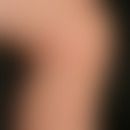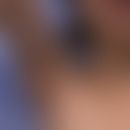Synonym(s)
Urticaria Autoimmunurticaria
DefinitionThis section has been translated automatically.
Chronic, often particularly severe and long-lasting urticaria (higher antihistamine requirement than in non-autoreactive urticaria) due to the presence of mast cell-activating serum components. Detection is by a positive autologous serum test (ASST).
EtiopathogenesisThis section has been translated automatically.
The urticarial skin changes of autoimmunurticaria are caused by autoantibody-induced degranulation of mast cells located subepidermally. Histamine and other pro-inflammatory mediators (leukotrienes, prostaglandins, proteases) are released.
You might also be interested in
ClinicThis section has been translated automatically.
Picture of chronic, therapy-resistant urticaria. Patients with autoreactive urticaria are more prone to angioedema. Autoimmune diseases such as vitiligo, diabetes, rheumatoid arthritis, pernicious anaemia and Hashimoto's thyroiditis are still associated with above-average frequency.
DiagnosisThis section has been translated automatically.
About 1/3 of all patients with chronic urticaria have a positive autologous serum test.
- Skin tests: Autologous serum test (intracutaneous injection of autologous serum; always perform positive control with histamine), prick test. In the autologous serum test, serum is obtained from fresh whole blood and 50 µl is injected intracutaneously into the volar forearm. Reading after 30 min. The test reaction is considered positive if a wheal > 1.5 mm or 1.5 mm > is readable as a reference saline wheal.
- Autoantibody detection method: Detection of anti-IgE autoantibodies.
- Cell activation assays: Detection of mast cell activating AAK by measuring the mediators released by FcεRI expressing cells.
The autologous serum test is used for the detection of autoreactive urticaria. The diagnosis of autoimmunurticaria is only made if anti-FceRI-AAK and/or anti-IgE-AAK can be detected by an AAK detection and if a cell activation assay can show that these AAK are functionally relevant.
TherapyThis section has been translated automatically.
- Specific causal therapy methods do not yet exist. An eradication of chronic infections is recommended, as well as a low pseudoallergen diet.
- The therapy approach with DADPS (50-100 mg/day p.o.) or chloroquine (250 mg/day p.o.; maintenance dose may be lower) is, in addition to the aforementioned therapy modalities, the first choice.
- Intravenous immunoglobulins ( IVIG) and plasmapheresis are effective, but cannot be regarded as standard therapy, especially because of the high therapy costs.
- In severe forms, Ciclosporin A has been successfully used in 2 controlled clinical trials.
NaturopathyThis section has been translated automatically.
Positive study experiences with autologous whole blood injections are available.
LiteratureThis section has been translated automatically.
- Maurer M et al (2004) Autoreactive urticaria and autoimmunurticaria. Dermatologist 55: 350-356
- Raap U et al (2004) New treatment options for urticaria and its subtypes. Dermatologist 55: 361-366
- Staubach P et al (2006) Autologous whole blood injections to patients with chronic urticaria and a positive auotologous serum skin test: A placebo-controlled trial. Dermatology 212: 150-159
- Weller K et al (2010) Chronic urticaria. Dermatologist 61: 750-757
Incoming links (4)
Ivig; Schnitzler syndrome; Urticaria autoimmunurticaria; Urticaria chronic spontaneous;Disclaimer
Please ask your physician for a reliable diagnosis. This website is only meant as a reference.




